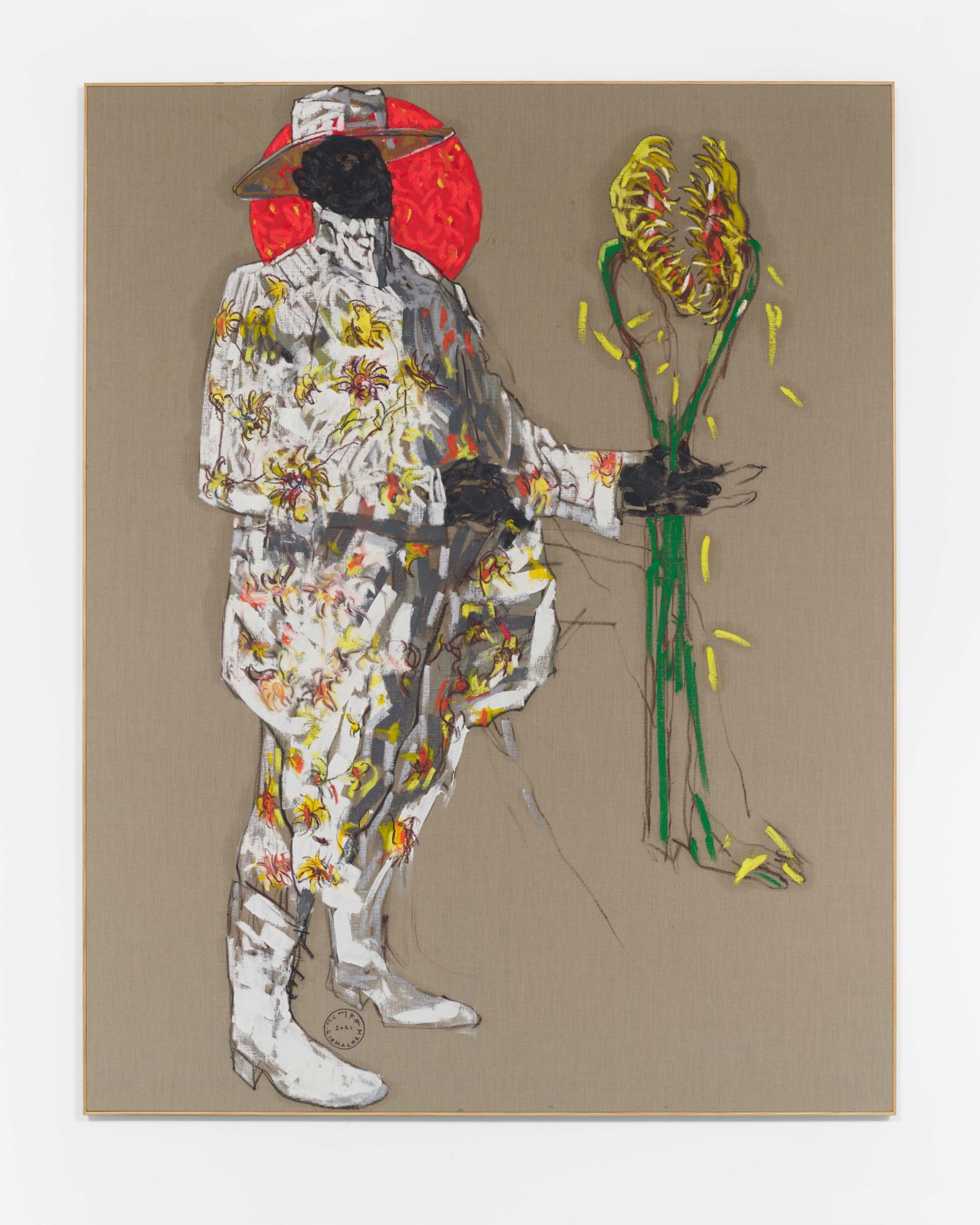
Simchowitz is pleased to present ‘Alkebu-lan’, the gallery’s first solo exhibition of works by Girmachew Getnet (b. 1980 Addis Ababa). The title refers to the oldest recorded name for the African continent, which was used by indigenous groups to mean ‘The Garden of Eden’ or ‘The Mother of Mankind.’ When used today, at least for Girmachew, it can also suggest a sensibility or ethos; a way of seeing or believing. For him it’s about reconnecting to the continent’s pre-Colonial history and celebrating its potentiality and richness of culture. Girmachew, who was born in Ethiopia and now lives and works in Frankfurt, Germany, has used that idea of Alkebu-Lan as both a historic reality and an ideology aspiration to inspire narratives, parables, and metaphors that he can use in his own work. As he explains, “my work is about the language of the spiritual world and the invisible reality that
is everywhere.”
Indeed, his atavistic paintings—which he often calls ‘painted drawings’—are loaded with densely packed references and symbols. You’ll see for instance, images of men, lined up in formation, being surveilled by gigantic bees; or blindfolded bodies, some blue, some yellow, some red, walking on tightropes over snowy mountain peaks; or effigies being erected over Stonehenge-like monuments. Each of these elements has its own meaning to the artist, which are often linked to Afrofuturist forms of resistance, transcendence and/or agency. The snowcapped mountains in “1 Titel Circle” (2021), for instance, not only represents “the truth of today’s generation,” as he explains, but the “the false reality supported by modern Western education” (i.e. black rocks veiled in white snow). Another common image is a large wall, or boundary, which he sees as the symbol for the literacy taught at universities (aka Western knowledge).
For Girmachew, this reproachment of the African mindset beyond a Western point of view can be essential to his work. As he points out, even though Ethiopia was never colonized, he’s deeply sympathetic to those who have “lost their original name, tradition, culture, language and religion,” due to Western colonization. “We are all shaped by the Western school system,” he adds, “the Western political system and even the Western spiritual system.” And some of that “damage” as he calls it, has become the very subject of his paintings.
More importantly, Girmachew’s ‘reparative resistance’ can also be read in positive, uplifting terms. The figure of the snake for example which appears in some of his paintings, often refers to the snake called Winimba, which was killed by Agabos, the father of Queen Sheba. According to lore, the snake lived for years, growing fat on the fears of Ethiopians—a fear that only spread discord, division and a lack of self-confidence. But once the snake was conquered, unity and peace grew, and the circle of community was formed.
For Girmachew, that’s what he hopes for Africa in general, for people “to live as their truest forms,” as he explains, “under the philosophy of the circle and everything it represents; wholeness, original perfection, self, infinity, eternity, timelessness, all cyclic movement, non-existence and eternity, no beginning and no end, sun, universe, center, power, energy, enlightenment, and time.”
Girmachew Getnet was born in 1980 and graduated from the Addis Ababa Fine Arts and Design School in 2001. Shortly thereafter he established the first art studio in his hometown called the Habesha Art Studio. His work has been shown at the Alliance Ethio-Française (Ethiopia), Goethe Institute (Addis Abada), Gebre Kristos Center (Ethiopia), Kunstverein Familie Montez (Frankfurt), Gallery BRAUCHBACHfive (Frankfurt), Atelier Frankfurt, Circle Gallery (Nairobi), Gallery DOXA (Slovakia), Lela Gallery (Ethiopia), and CFHILL Gallery (Stockholm). His solo show at the Grassi Museum, Leipzig (2007), included his short film,
‘Free Space’ (2007).
